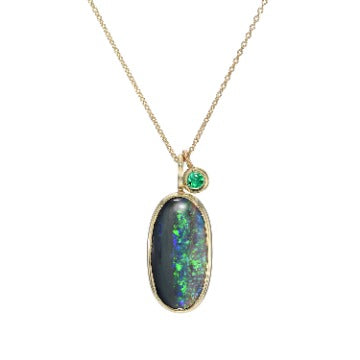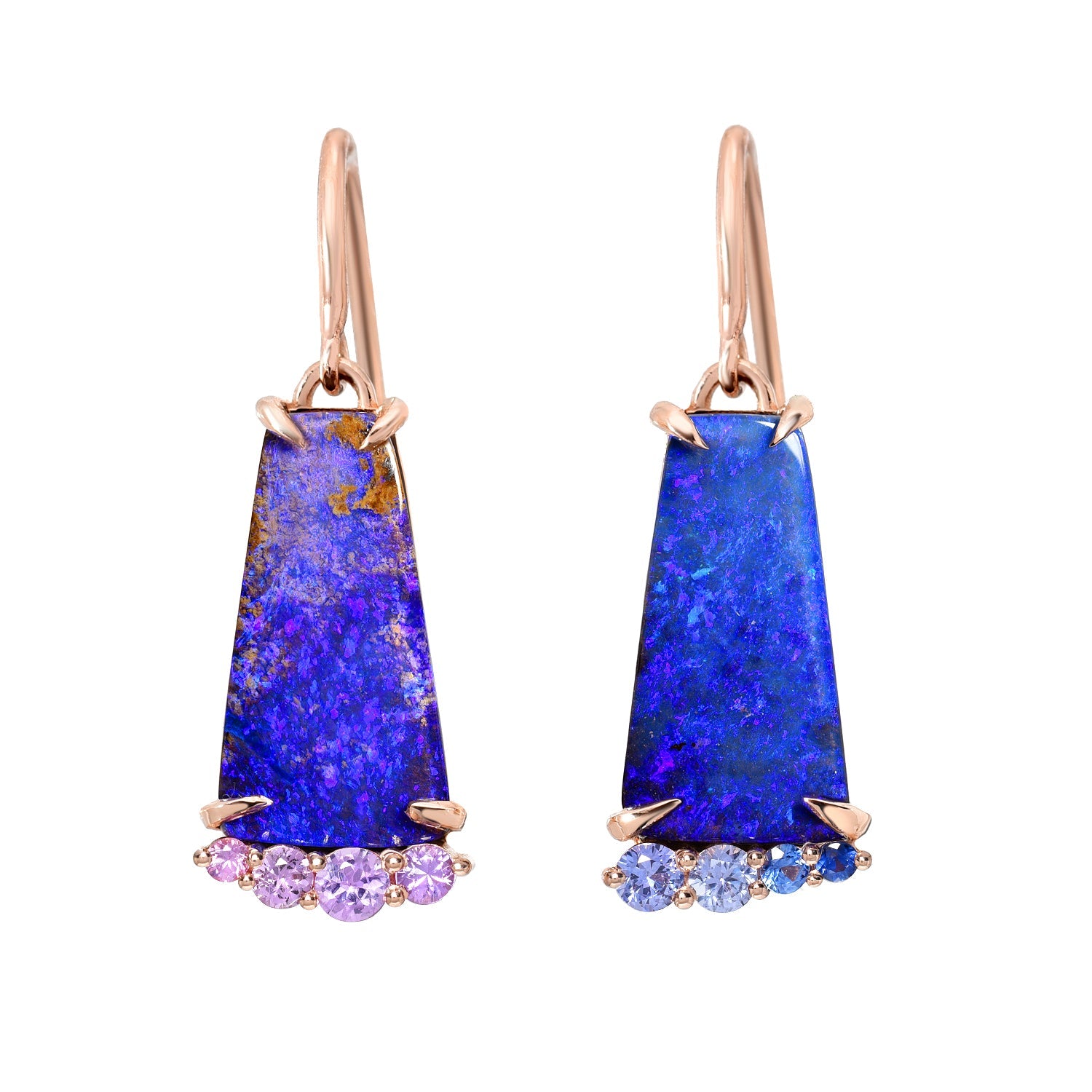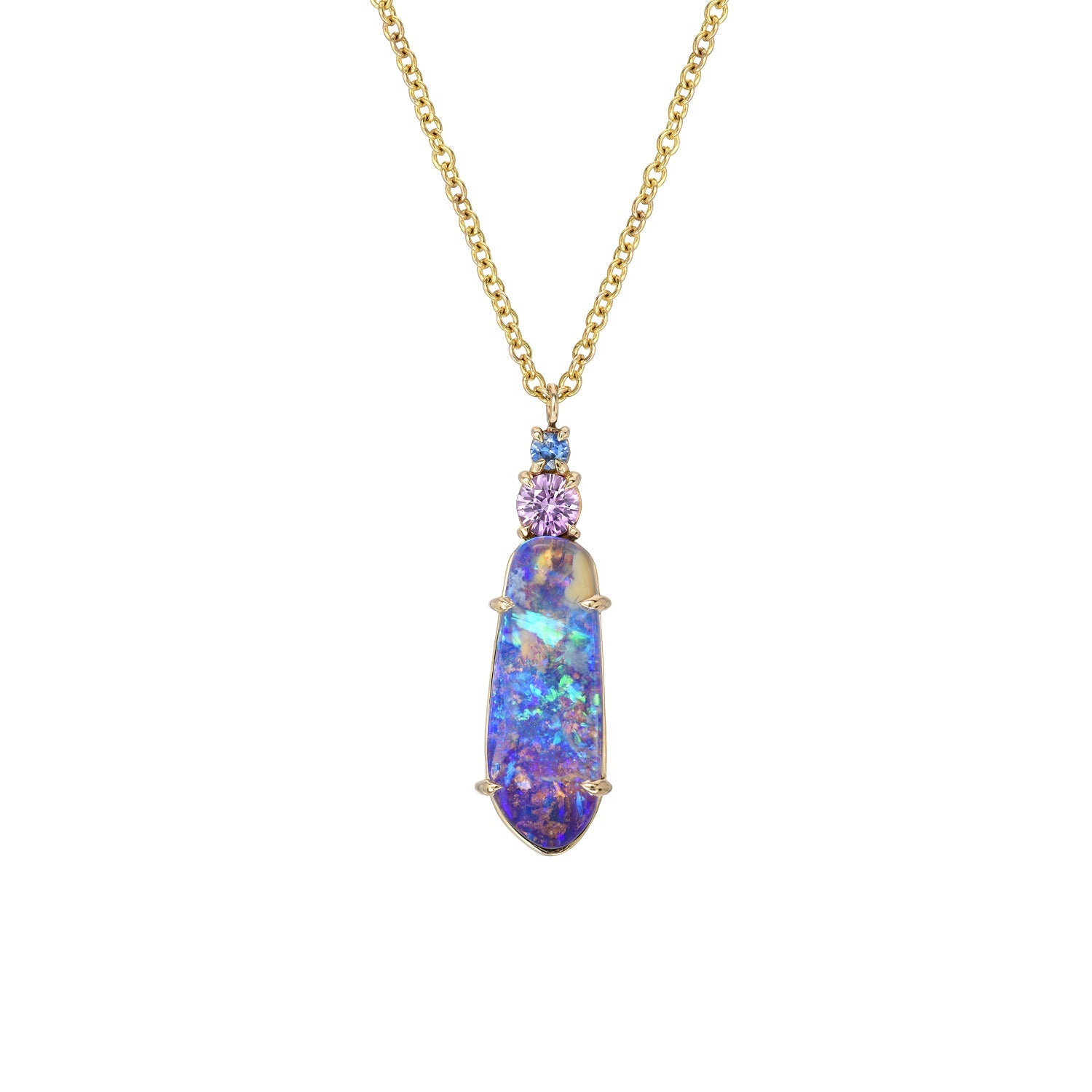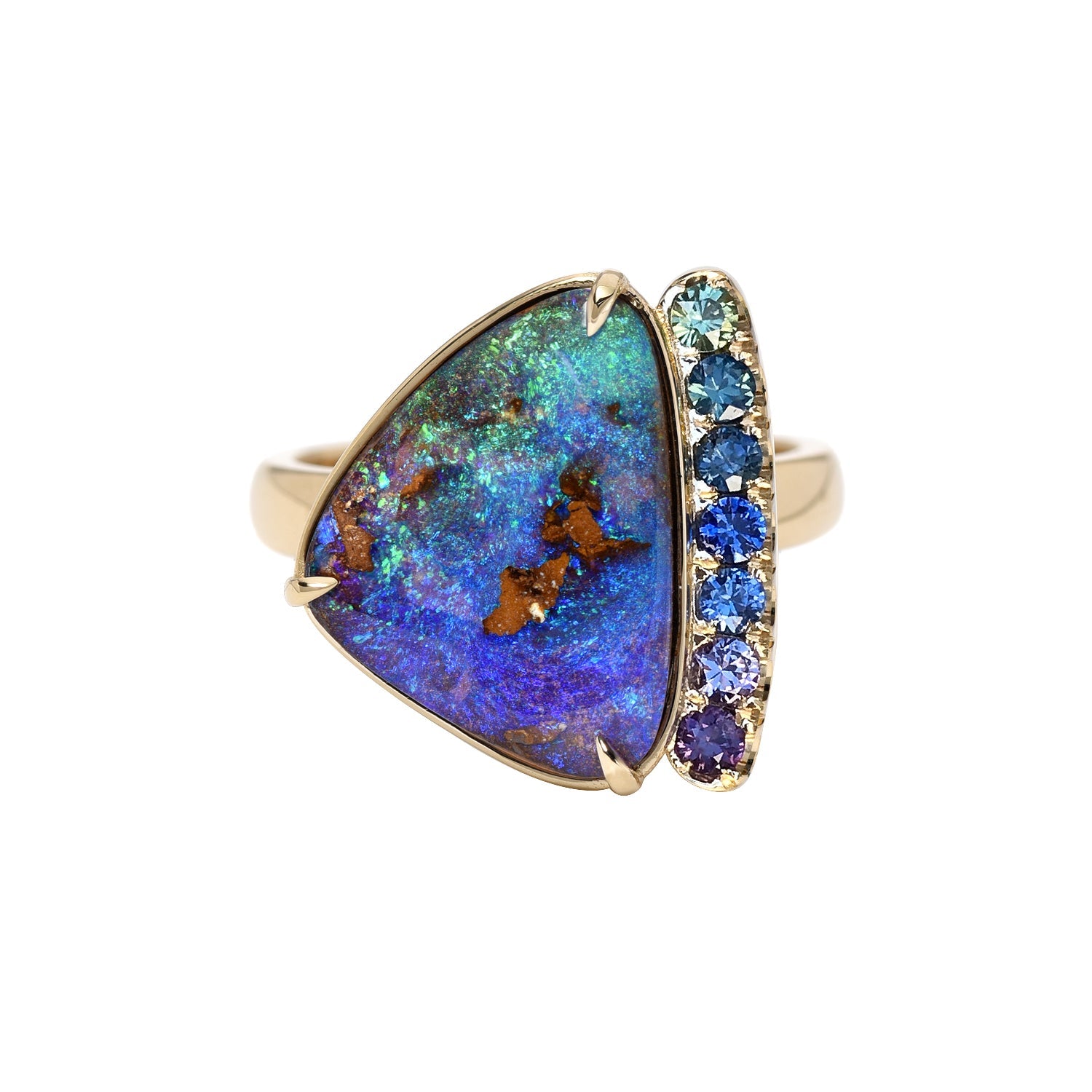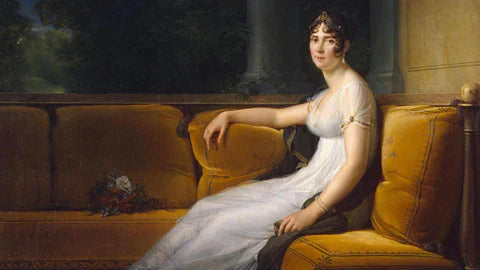
Empress Josephine’s “Burning of Troy” Opal
luis gomezShare
Opals have had a rather interesting stroll through history. Mankind has had a magnetic draw to them, and turbulent relationship with them since they were first uncovered. Diamonds, sapphires, and pearls are relative newcomers when compared to the draw of the illustrious Opal. To what extent? Diamonds only recently, as of the 15th century, started to be used in engagement rings. Up until that time, Opals had been the cornerstone gem when it came to jewelry making. They were extremely valuable and sought out by collectors and sovereignty — by Emperors, Sultans, Pharaohs, and Kings. In this article, we’re going to talk about one of those Opal collectors and a particular Opal he acquired - a mysterious one with a rather cryptic history. It's a chronicle that includes Napoleon Bonaparte, and Empress Josephine de Beauharnais — we’re going to discuss the enigmatic “Burning of Troy” Opal.
Napoleon and Empress Josephine
By the time Madame de Beauharnais met Napoleon Bonaparte in 1795, she'd already had a series of affairs and two children under her wing. The aristocrat had been previously married - though unhappily - and widowed, after her first husband fell to the guillotine during the “Reign of Terror.” Following his death, Josephine drowned her sorrows in affairs with those well-positioned to aid her financially distressed family. She had a type — leading political personalities.

In 1795, she stumbled upon Napoleon, six-years her junior, and sparks flew. Up until this time, she went by the name ‘Rose’ but Napoleon preferred ‘Josephine’ so she obliged, and from that point on was known as such. She became his mistress and he was enraptured not only by her beauty but also by her wild temper and dominion in the bedroom.
“I awake full of you. Your image and the memory of last night’s intoxicating pleasures have left no rest to my senses.”
Less than a few mere months after they met, Napoleon proposed to Josephine. They were wed on March 9th, 1796 and their marriage was a bit rocky from the get-go. Passionate, intense, hostile, aggressive, some might even describe it as insane — the sort of marriage books are written about.
Here’s a glimpse inside their affair:
Before their coronation, Josephine waltzed into the bedroom of her very own lady-in-waiting, Elisabeth de Vaudey, with whom she caught Napoleon, soon- to-be emperor of France, with his trousers around his ankles. It was that sort of relationship. Napoleon had his mistresses, and Josephine had her affairs. They engaged in a tug of war of love. Josephine would give Napoleon the cold shoulder, while the Emperor showered her with gifts and love letters. Napoleon was said to have kept a picture of her in his pocket, and on a daily basis, in front of his men, to pluck it out and plant kisses upon it.
They loved each other in their own bizarre way.
The heir apparent

In 1809, Napoleon let Josephine know that in the interest of France he had to find a wife that could produce an heir. Josephine agreed to a divorce and the two parted on relatively good terms.
Although Napoleon remarried and began a family with Marie-Louise of Austria, reports claim that he and Josephine were still secretly in love. Josephine died in 1814, just shy of her 51st birthday, at her home in Malmaison - her last thought was allegedly of Napoleon.
The Burning of Troy
During their wild and tumultuous marriage, Napoleon often showered Josephine with gifts, many of which were the spoils of his conquests. One of his most enigmatic offerings, and allegedly Josephine’s favorite, was the Opal dubbed, “The Burning Of Troy.”
“The Burning of Troy” got its name from its blazing flash of fire - red and intense - that raged against its dark black base. However, very little is known about this black Opal — its legacy is shrouded in mystery. Although more questions remain about this black opal than answers, here are some of the facts historians have managed to unearth regarding “The Burning of Troy.”
- Based on existing documentation, “The Burning of Troy” Opal is reported to have been at least 700 carats. There is even an account citing it weighing in at 3,000 carats, though the accuracy of this report is impossible to confirm. Even at a “mere” 700 carats, the Opal would have been tremendous.
- Unlike some of Napoleon’s other gifts, “The Burning of Troy” was not believed to be a spoil of war, though no one is certain where he got it from or just how he acquired it.
- Until the 20th century, most historians were convinced that the Opal must have originated from the Czerwenitz Mines of Hungary. At that time, most Opals in Europe were said to have been unearthed there. Today however, considering its pitch black nucleus and reported colossal size, most experts have shifted opinion and believe that the stone actually hailed from Honduras.
- The stone's origin, due to the fact that it comes from Honduras, is also a huge mystery. How did Napoleon get his hands on it? And why? Historically, most of Napoleon’s gifts for Josephine came from Italy or were appropriations of war. What would have triggered such a departure from his usual gifting pattern?
- Upon her death in 1814, the stone was lost for almost 100 years. The most likely explanation is that it was bestowed to one of Josephine’s heirs who tucked it away in hiding.
- Prior to the onset of WWI, the Opal reappeared in Vienna. Some historians believe that city officials purchased the stone at this time, from a seller who remained anonymous. At the conclusion of the war, the Austrians were reportedly offered somewhere between 24,000 - 50,000 lira for the Opal, yet turned it down, despite the value of those funds in their post-war, exhausted financial condition. It was simply a treasure too great to relinquish.
- The Austrians held onto the stone for over 20 years, then WWII seized Europe, and the Opal once more vanished without a trace, never to resurface again.
- It is one of the most discussed and sought-after gemstones in existence. Today, no one (admittedly) knows where “The Burning of Troy” is.
Without any known photographs of this remarkable stone, we are left to use our imaginations to envision its glory. Here at NIXIN Jewelry, we lean into our imagination with every piece of black opal jewelry we create. Come see what we’ve been dreaming up.

